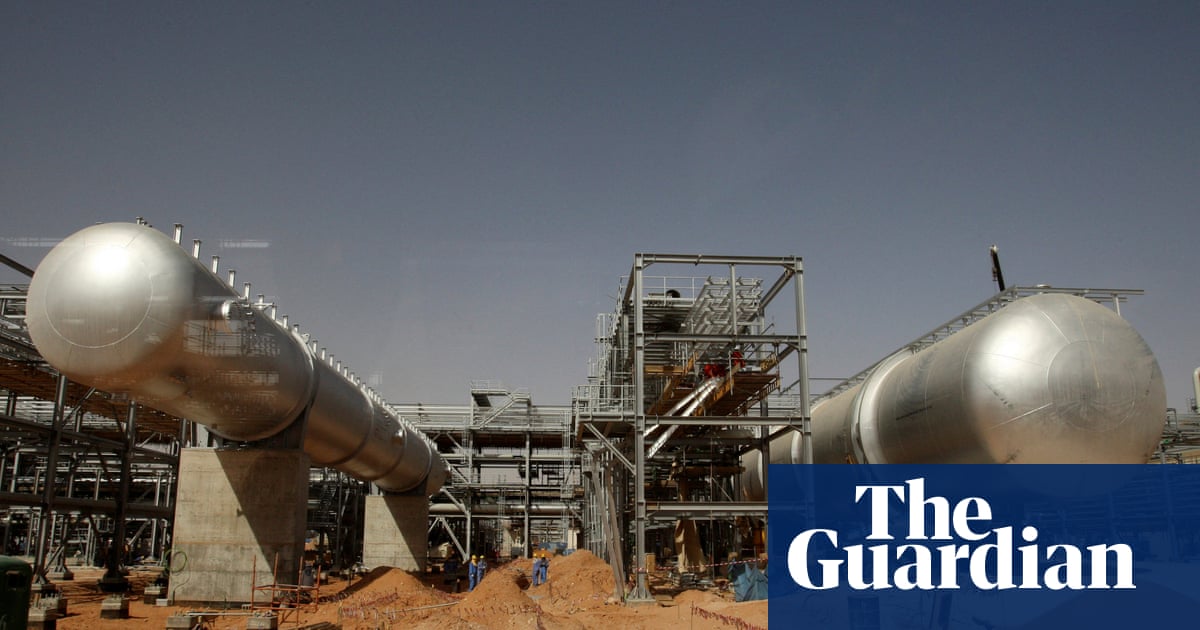
Saudi Energy Minister Khalid Al-Falih: “Two years ago we pulled supply. I think in the near future there will be time to release supply.”
Russian Energy Minister Alexander Novak said on Thursday that restrictions on oil production could be lifted “softly” if OPEC and non-OPEC countries see the oil market balancing in June.
LONDON: Saudi Arabia and Russia, two of the world’s biggest oil producers, expect to ease output curbs “in the near future,” in the wake of rising prices and concerns on tightening supply.
Brent crude futures fell 3 percent on the news, the first firm signal of a modification to 2016’s landmark agreement between OPEC, Russia and other non-OPEC producers to limit production to cut oversupply in the market.
Russian Energy Minister Alexander Novak, speaking at the St. Petersburg Economic Summit, said on Thursday that restrictions on oil production could be lifted “softly” if OPEC and non-OPEC countries see the oil market balancing in June.
A producer summit is slated for June 22 in Vienna to review the cuts agreement, known as the OPEC+ accord. The reduction in output has seen prices recover from below $30 a barrel in early 2016 to as high as $80 a barrel earlier this month. Prices have been bolstered by US President Donald Trump’s decision to reimpose sanctions on Iranian oil and other goods, and the collapse in exports from crisis-hit Venezuela and, to a lesser extent, Mexico.
“Two years ago we pulled supply. I think in the near future there will be time to release supply,” said Saudi Energy Minister Khalid Al-Falih at a panel discussion at the St. Petersburg event.
“It’s likely that it will happen in the second half of this year. We’ve had intensive discussions (with the Russian energy minister), and I think we’re aligned on that.
“Whether it’s a million barrels (or) more or less, we think we’ll have to wait until June before making that announcement,” he said.
While producers have cheered the recovery in prices, concerns are growing about supply shortages in the market, especially given developments in Iran and Venezuela.
“If for the sake of argument (this is not a forecast) Iran’s exports were to fall by about the million barrels a day, the same as they did last time around, and with another several hundred thousand barrels possibly lost from Venezuela, you are in a situation that unless there are compensating increases from elsewhere the market will tighten very, very rapidly indeed,” Neil Atkinson, head of the oil industry and markets division at the International Energy Agency told Arab News.
He said the signs from St. Petersburg were that this was recognized, and that at some point in the future, “they will crank up output by an as yet unspecified amount … to avoid (consumer) demand destruction.”
Atkinson said US shale production was increasing markedly, but “on its own” wouldn’t be enough to replace lost production from elsewhere.
Producers need to decide whether to stick to the OPEC+ accord until the end of 2018 — as agreed last November — or signal a winding down of the agreement to avert a supply crunch that could see prices rocket to more than $100 a barrel again, according to some analysts interviewed by Arab News.
Richard Mallinson, co-founder of Energy Aspects and a research associate at the Oxford Institute of Energy Studies, told Arab News that he believed the newly established oil alliance between Saudi Arabia, OPEC and Russia would likely continue in some form.
“The Saudis and Russians have been talking about aligning their goals and achieving a long-term impact,” he said. “(They) want a long- term co-operation agenda, not just a short deal.”
“Whenever it does begin to be unwound, the plan and intention of the producers is to do that in as orderly way as possible, to maintain their influence on the market.”
Shakil Begg, global head of oil research at Thomson Reuters, told Arab News: “We know GCC countries are considering how to replace lost Iranian barrels. They could maintain the output agreement, but quotas for the individual countries could change. Or they could choose to abandon it altogether.”
The signals were that they still wanted to maintain some sort of co- ordinated agreement, he suggested.
Mallinson said one important takeaway was that the world had woken up to the fact that “we are no longer in an oversupplied market … the mantra of lower for longer has been disproven,” he said.
The change from surplus to deficit had restored much of OPEC’s influence, he noted. “A couple of years ago people were writing off the group as irrelevant because US shale production was surging. Now OPEC is back in the spotlight,” he said.
But the realization that it still had significant influence over the market meant it will come under pressure to lay out how it will respond to price increases. “It will also need to show how it will deal with any supply disruption from the reimposition of US sanctions on Iran and ongoing declines in output from Venezuela,” Mallinson said.












